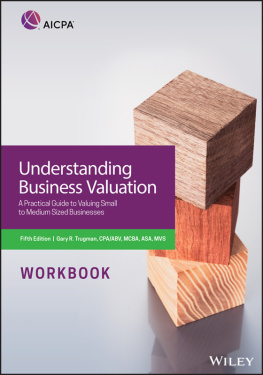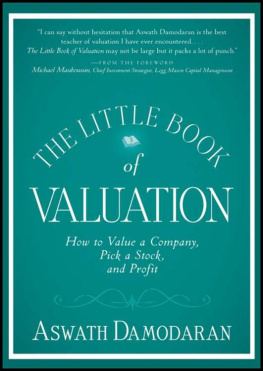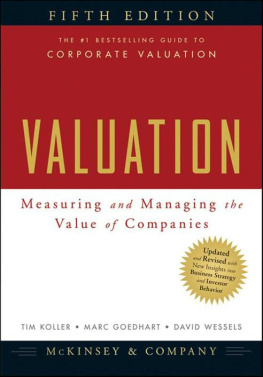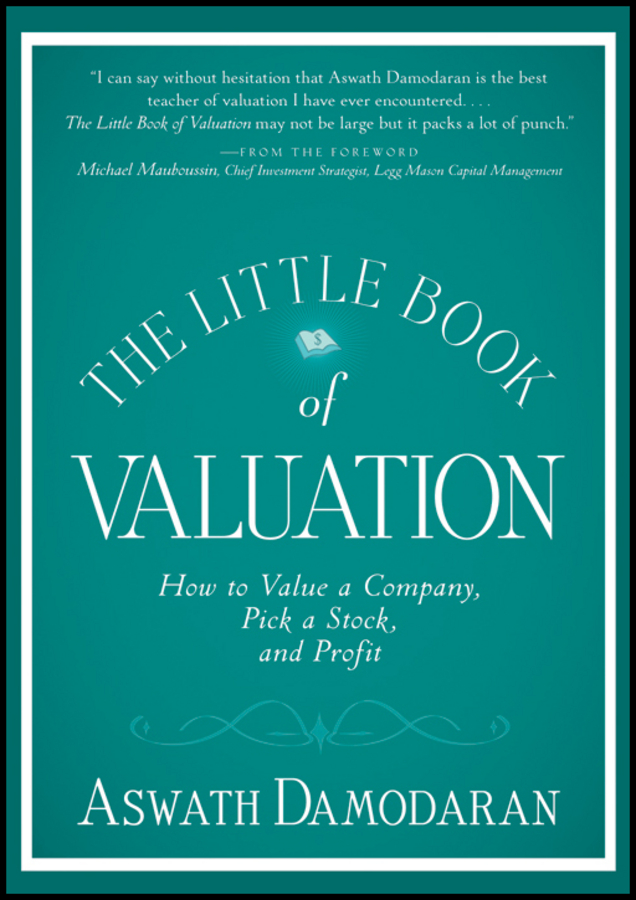Contents
Little Book Big Profits Series 
In the Little Book Big Profits series, the brightest icons in the financial world write on topics that range from tried-and-true investment strategies to tomorrows new trends. Each book offers a unique perspective on investing, allowing the reader to pick and choose from the very best in investment advice today.
Books in the Little Book Big Profits series include:
The Little Book That Still Beats the Market by Joel Greenblatt
The Little Book of Value Investing by Christopher Browne
The Little Book of Common Sense Investing by John C. Bogle
The Little Book That Makes You Rich by Louis Navellier
The Little Book That Builds Wealth by Pat Dorsey
The Little Book That Saves Your Assets by David M. Darst
The Little Book of Bull Moves by Peter D. Schiff
The Little Book of Main Street Money by Jonathan Clements
The Little Book of Safe Money by Jason Zweig
The Little Book of Behavioral Investing by James Montier
The Little Book of Big Dividends by Charles B. Carlson
The Little Book of Bulletproof Investing by Ben Stein and Phil DeMuth
The Little Book of Commodity Investing by John R. Stephenson
The Little Book of Economics by Greg Ip
The Little Book of Sideways Markets by Vitaliy N. Katsenelson
The Little Book of Currency Trading by Kathy Lien
The Little Book of Alternative Investments by Ben Stein and Phil DeMuth
The Little Book of Valuation by Aswath Damodaran

Copyright 2011 by Aswath Damodaran. All rights reserved.
Published by John Wiley & Sons, Inc., Hoboken, New Jersey.
Published simultaneously in Canada.
No part of this publication may be reproduced, stored in a retrieval system, or transmitted in any form or by any means, electronic, mechanical, photocopying, recording, scanning, or otherwise, except as permitted under Section 107 or 108 of the 1976 United States Copyright Act, without either the prior written permission of the Publisher, or authorization through payment of the appropriate per-copy fee to the Copyright Clearance Center, Inc., 222 Rosewood Drive, Danvers, MA 01923, (978) 750-8400, fax (978) 646-8600, or on the web at www.copyright.com . Requests to the Publisher for permission should be addressed to the Permissions Department, John Wiley & Sons, Inc., 111 River Street, Hoboken, NJ 07030, (201) 748-6011, fax (201) 748-6008, or online at http://www.wiley.com/go/permissions .
Limit of Liability/Disclaimer of Warranty: While the publisher and author have used their best efforts in preparing this book, they make no representations or warranties with respect to the accuracy or completeness of the contents of this book and specifically disclaim any implied warranties of merchantability or fitness for a particular purpose. No warranty may be created or extended by sales representatives or written sales materials. The advice and strategies contained herein may not be suitable for your situation. You should consult with a professional where appropriate. Neither the publisher nor author shall be liable for any loss of profit or any other commercial damages, including but not limited to special, incidental, consequential, or other damages.
For general information on our other products and services or for technical support, please contact our Customer Care Department within the United States at (800) 762-2974, outside the United States at (317) 572-3993 or fax (317) 572-4002.
Wiley also publishes its books in a variety of electronic formats. Some content that appears in print may not be available in electronic books. For more information about Wiley products, visit our web site at www.wiley.com .
Library of Congress Cataloging-in-Publication Data:
Damodaran, Aswath.
The little book of valuation : how to value a company, pick a stock and profit / Aswath Damodaran.
p. cm. (Little book big profit)
ISBN 978-1-118-00477-7 (cloth); 978-1-118-06412-2 (ebk); 978-1-118-06413-9 (ebk); 978-1-118-06414-6 (ebk)
1. CorporationsValuation. 2. StocksPrices. 3. Investment analysis. I. Title.
HG4028.V3D3535 2011
332.63221dc22
2010053543
To all of those who have been subjected to my long discourses on valuation, this is my penance.
Foreword
If you take a moment to think about it, stock exchanges provide a service that seems miraculous. They allow you to exchange cash that you dont need today for a share in a claim, based on the future cash flows of a company, which should grow in value over time. You can defer consumption now in order to consume more in the future. The process also goes in reverse. You can sell shares in a company for cash, effectively trading tomorrows potential for a certain sum today. Valuation is the mechanism behind this wondrous ability to trade cash for claims. And if you want to invest thoughtfully, you must learn how to value.
As a student and practitioner of valuation techniques throughout my career, I can say without hesitation that Aswath Damodaran is the best teacher of valuation I have ever encountered. I have attended his lectures, consulted his books, pored over his papers, and scoured his web site. He combines remarkable breadth and depth with clarity and practicality. He intimately knows valuations big ideas as well as its nooks and crannies, and delivers the content in a useful and sensible way. If you are looking to learn about valuation from the master, you have come to the right place.
The Little Book of Valuation may not be large, but it packs a lot of punch. Youll start off learning about the basics of discounted cash flow and quickly move to valuation multiples. Professor Damodaran also frames a proper mind-setvaluations are biased and wrong, and simpler can be betterand emphasizes the difference between intrinsic and relative approaches. His discussion of the pros and cons of popular valuation multiples is especially useful.
Valuing businesses at different stages of their lives is tricky. For example, how do you compare the relative attractiveness of a hot initial public offering of a company boasting the latest whiz-bang technology to a stable but staid manufacturer of consumer products? In the heart of the book, Professor Damodaran helps you navigate the valuation issues that surround companies at different points in their life cycles, providing vivid and relevant examples that help cement the ideas.
The books final section guides you in dealing with some of the special situations that you are likely to encounter. For instance, valuing a company that relies on a commodity that rises and falls like a roller coaster is an inherently thorny problem. So, too, is valuing a company that pours money into research and development with little that is tangible to show for it. These are some of the valuation challenges you will face as a practitioner, but are also among the most rewarding.
Dont put the book down until you have read, and internalized, the 10 Rules for the Road in the conclusion. They effectively meld good theory and practice, and will guide you when you reach a point of uncertainty.
Valuation is at the core of the economic activity in a free economy. As a consequence, a working knowledge of valuations broad concepts as well as its ins and outs is of great utility. Aswath Damodaran has done more to bring these ideas to life than anyone I know. I hope that you enjoy The Little Book of Valuation and profit from its lessons.










